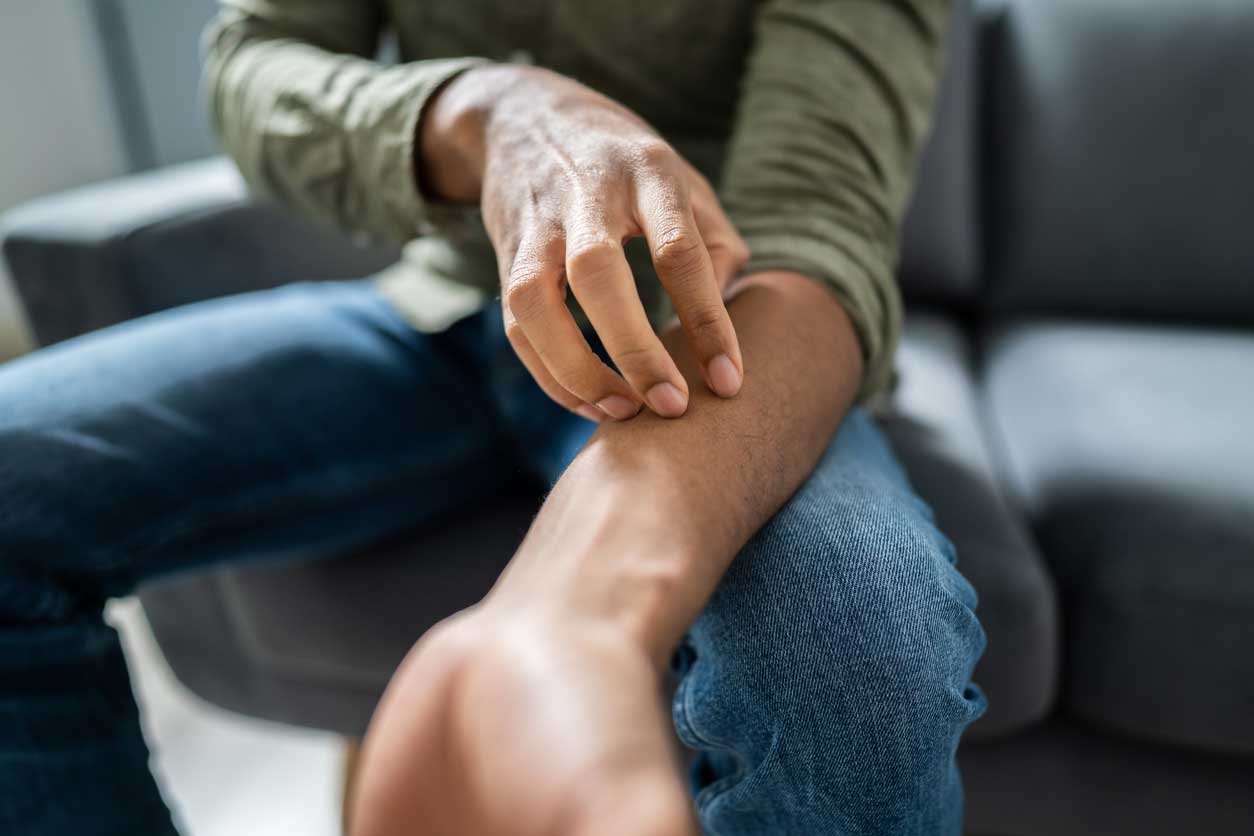Why Do Opiates Make You Itch?
Opiates, also known as opioids, are a class of medications that bind to opioid receptors in the brain and body to relieve pain. Common opiates include prescription pain medications like morphine, oxycodone, hydrocodone, and fentanyl, as well as illicit opium-derived drugs like heroin.
While opiates are very effective for treating acute and chronic pain, they also frequently cause side effects like nausea, constipation, and itching. Opioid-induced itching, medically known as opioid-induced pruritus (OIP), affects an estimated 60-100% of patients taking opioids. But what causes this troublesome side effect?
Understanding Opioid-Induced Pruritus
Researchers have proposed several potential mechanisms to explain why opioids make people itchy:
Activation of Opioid Receptors: Opioids bind to mu-opioid receptors found on neurons in the central nervous system and skin. This activates neurons involved in processing itch and pain signals, causing pruritus.
Release of Inflammatory Mediators: Opioids trigger mast cells in the skin to release histamine, cytokines and other inflammatory substances. These mediators act on nerves to cause vasodilation and inflammation, leading to itching and redness.
Imbalance Between Pain and Itch Pathways: Opioids may preferentially inhibit central pain pathways while enhancing signaling in itch pathways, resulting in a paradoxical itch sensation.
Alterations in Neurotransmitters: By interacting with receptors for serotonin, substance P, acetylcholine, and other neurotransmitters involved in itch transmission, opioids can modulate and dysregulate normal itch signaling.
What Factors Influence Opioid-Induced Itching?
Several factors can impact one's likelihood and severity of experiencing opioid-induced pruritus:
Opioid Potency: More potent opioids like morphine and hydromorphone have higher rates of pruritus compared to less potent ones like codeine. Fentanyl has an exceptionally high rate of itching of up to 100%.
Route of Administration: Intraspinal administration has higher rates of itching than oral opioids. This may be because intraspinal opioids achieve higher concentrations near itch-processing areas in the dorsal horn of the spinal cord.
Individual Differences: Women and younger individuals tend to be more susceptible to opioid-induced itching. Genetic differences related to opioid receptors and inflammatory pathways may also contribute.
Opioid Tolerance: Opioid-naive patients are more prone to itching compared to tolerant patients on chronic opioid therapy. This may be due to the gradual desensitization of itch pathways.
Managing Opioid-Induced Pruritus
If opioid-induced itching occurs, several pharmacologic and non-pharmacologic measures can help provide relief:
Antihistamines: Antihistamines like diphenhydramine, hydroxyzine, and cetirizine can help relieve itching through their sedative and anti-inflammatory properties.
Opioid Antagonists: Low-dose naloxone and naltrexone help by competing with opioids for receptor binding sites, thereby reducing itch signaling.
Opioid Rotation: Switching to alternative opioids like buprenorphine or methadone with less pruritogenic effects may resolve itching.
Topical Treatments: Emollients, menthol, capsaicin creams, and other topicals can soothe itchy skin. Topical steroids help resolve any inflammation.
Ondansetron: As a serotonin antagonist, ondansetron may modulate serotonin's role in opioid-mediated itch.
Non-pharmacological Methods: Relaxation techniques, cold compresses, acupuncture, and massage can provide additional relief from pruritus.
Preventing Opioid Addiction
While many people take opioids responsibly, anyone can develop an opioid use disorder with prolonged use. Signs of addiction include inability to control use, constant cravings, and use despite harm. Preventative strategies include:
Taking opioids only as prescribed under medical supervision
Trying non-opioid pain medications when possible
Practicing healthy coping strategies for pain
Having open conversations with doctors about addiction risk
Safely storing medications to prevent misuse
Opioid-induced itching is an exceedingly common side effect of opioid pain medications, affecting up to 100% of patients depending on the opioid used. The mechanisms behind OIP involve interactions between opioids and itch-related pathways in the nervous system and skin.
Anti-itch treatments, alternative pain management approaches, and addiction prevention measures can help manage this troublesome issue. As research on the neurobiology of itch continues, more targeted treatments for opioid-induced pruritus are on the horizon.
Getting Help for Opioid Addiction
Opioid addiction is a chronic disease that requires comprehensive treatment through medication, counseling, and social support. Evidence-based treatment options include:
Medication-assisted treatment (MAT): FDA-approved medications like methadone, buprenorphine, and naltrexone help curb cravings, and withdrawal symptoms, and prevent overdose.
Cognitive-behavioral therapy (CBT): CBT helps patients modify unhealthy attitudes and behaviors around drug use and develop better-coping mechanisms.
Contingency management: This provides incentives to reinforce positive behaviors like abstinence from opioids.
Support groups: Peer support groups like Narcotics Anonymous provide understanding, shared experiences, and accountability.
Recovering from opioid addiction is challenging but very possible with professional treatment tailored to individual needs. If you or a loved one are struggling, reach out today to take the first step.
To get started and receive your free, confidential consultation with an intake specialist at pH Wellness, call 844-549-2488 now.
Frequently Asked Question (FAQ)
-
Opioid medications like morphine, oxycodone, and codeine commonly cause itching or pruritus as a side effect. Up to 100% of people taking opioids can experience opioid-induced itching.
-
Tramadol is an opioid pain medication, so it can cause itching by activating opioid receptors in the nervous system and skin. This stimulates itch-signaling pathways, leading to pruritus.
-
Strategies to stop opioid-induced itching include taking antihistamines, using topical creams, trying opioid rotation, and taking medications like naloxone or ondansetron. Non-drug approaches like cold compresses also help.
-
Several conditions can cause severe itching without a rash, including opioid use, kidney disease, liver disease, thyroid problems, diabetes, anxiety, neuropathy, and rarely cancers. Seeing a doctor is important to determine the cause.





